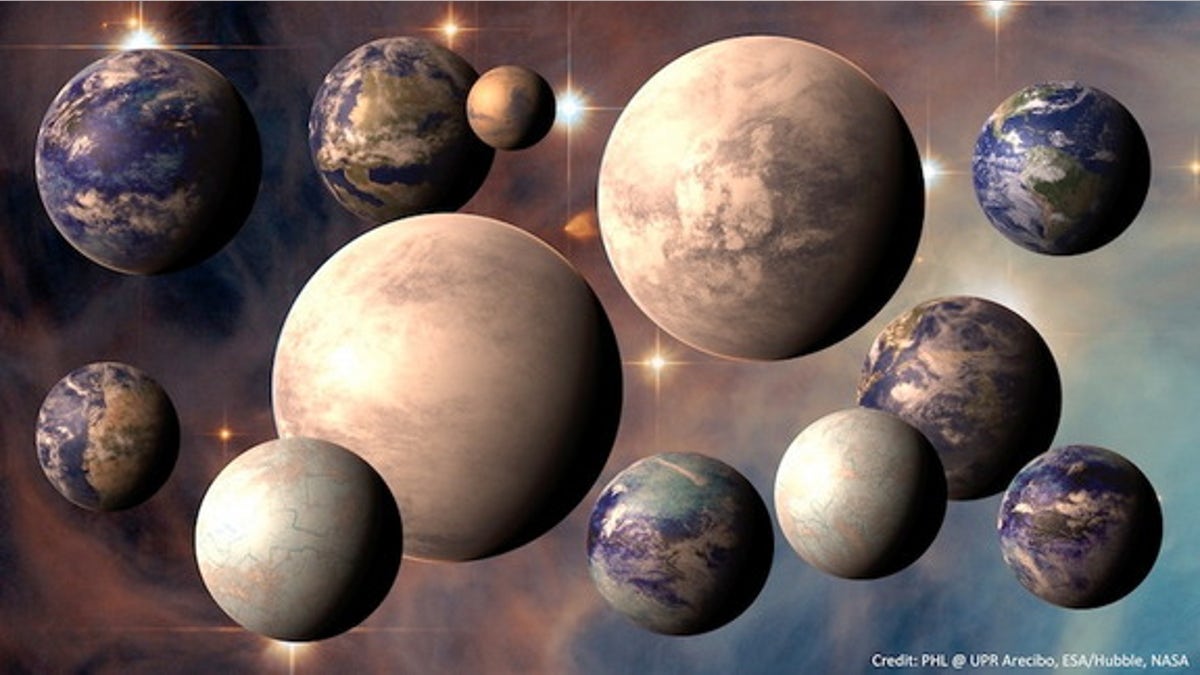
(PHL @ UPR Arecibo, ESA/Hubble, NASA)
A new catalog aims to list all the known planets in the galaxy that could potentially be habitable to life. The count is at seven so far, with many more to come, researchers said.
The online listing, called the Habitable Exoplanets Catalog, celebrated its first anniversary this week. When it was first released last year, it had two potential habitable planets to its name. According to lead researcher Abel Mendez, the team expected to add maybe one or two more in the catalog's first year. The addition of five suspected new planets was wholly beyond anyone's expectations.
"The main purpose is for research, but then I realized that also for the public, it was very important," said Mendez, director of the University of Puerto Rico at Arecibo's Planetary Habitability Laboratory.
"There are many press releases announcing discoveries of habitable planets ... and that is confusing," Mendez told SPACE.com. "So having a catalog that everyone can check what is available right now is useful."
Mendez also said scientists are getting smarter about finding exoplanets, and the pace of discovery is increasing. [Gallery: 7 Habitable Exoplanets]
There are 27 candidate planets waiting for inclusion in the habitable portion of the catalog. Meanwhile, the HARPS (High Accuracy Radial Velocity Planet Searcher) instrument in Chile and orbiting Kepler Space Telescope, among others, are quickly finding new exoplanets every month.
Preliminary parameters for life
Mendez's team principally assesses the potential of life on a planet using three metrics: the variability of energy from the host star that the planet receives, the mass of the planet and the planet's size. Simplistically, bigger gas giants orbiting variable stars are less likely to host life than smaller, rocky planets near stable stars.
[pullquote]
Much of the catalog's data come directly from the research teams involved in an exoplanet's discovery. The catalog also includes information from the Extrasolar Planets Encyclopaedia and the NASA Exoplanet Archive.
Mendez cautions that the information is preliminary. So far, most of what we know about exoplanets comes from a simple physical assessment. Much less is known about chemical and biological information.
Also, sometimes a planet is found that can't be confirmed through independent observation. One famous example is Gliese 581g, which was discovered by one team but could not be found by another team using a different instrument. New datasets have been released, but there still is a debate. Mendez calls these situations "tricky."
"There are two versions of the story, and the two versions can be supported by data," he said. "But because we think that there's still the sense that planet could exist, we are including it [as a candidate]."
Public support
Mendez initially created the database to help with his research. He says he was honored by the reaction from the public and research community in the months after its release.
In the first two days of its existence, the catalog attracted 100,000 views — "for a research page, that's good," Mendez joked. It now consistently garners 10,000 to 30,000 views a month.
He's been approached at conferences and praised for his work, and the NASA Astrobiology Institute has told him the catalog is a useful tool. "It was more than I expected," he said.
Mendez has been aggressive with public outreach, with his team building mobile phone apps as well as a "periodic table" of exoplanets to drum up interest.
Meanwhile, more work on the catalog beckons. The team expects to add new models in the coming year, which will affect the measurements on objects already in the catalog.
But it will be discoveries, rather than mathematics, that will drive the pace of change, the team added in a statement.
"A true Earth analog or a potentially habitable exomoon would be big discoveries," it read. "Certainly, this was the right time to start mapping the habitable universe around us."